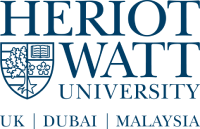Prof D Reid
Applications accepted all year round
Funded PhD Project (European/UK Students Only)
About the Project
Frequency combs are the world’s most precise laser sources, with intrinsic noise measured at the 10-19 level, and celebrated in the 2005 Nobel prize to Jan Hall and Ted Haensch for their early work in developing this technology.
This project is in support of the development of versatile frequency comb lasers which are needed as calibration sources for astronomical spectrographs. In this application, high resolution spectrographs are used to measure tiny Doppler shifts of starlight caused by the presence of an orbiting exoplanet. As astronomers focus on finding smaller exoplanets that more closely resemble the Earth, there is a need to measure smaller Doppler shifts, making the need for calibration of the telescope spectrographs very important.
Prof. Reid’s group has a track record in developing femtosecond OPOs as frequency combs for astronomy and metrology. This work will continue in 2016 under newly announced STFC funding for Phase A of the "UK Programme for the European Extremely Large Telescope," a UK consortium in which Reid’s group is a partner.
In the above context, this PhD project will continue a successful programme of work developing OPO frequency combs for astronomy and metrology. Key technical objectives are to extend the tunability and repetition rate of doubly-resonant Ti:sapphire-pumped frequency combs so they are suitable for the E-ELT telescope, which requires wavelength coverage from <400nm to 2.4um, and comb mode spacings of order 10 GHz and higher. Validation of OPO combs on astronomical spectrograph(s), either lab based or on a telescope, will be another part of the project. The demonstration of precision metrology, e.g. direct comb spectroscopy in the near- to mid-IR will be a further area of investigation. Opportunities for travel to validate the technology on a telescope are likely, with plans in place for an initial study on the South African Large Telescope in 2016.
Location:
Heriot-Watt is based in a modern environment on the outskirts of Edinburgh, with excellent transport links to the centre of one of Europe’s most exciting cities. Heriot-Watt was recently awarded (November 2013) an EPSRC Centre for Doctoral Training in Applied Photonics, cementing Heriot-Watt’s reputation as a centre of excellence in photonics, and providing PhD students with an even more attractive environment for study, as well as enhanced training opportunities.
Heriot-Watt Institute of Photonics and Quantum Sciences (IPAQS):
IPAQS is a thriving environment for PhD research, having a total of 160 academics, postdocs, PhD and EngD students working full-time in the general photonics field. It’s a friendly collaborative environment where staff and students freely interact -- not least at Friday morning coffee and donut sessions.
Funding Notes
This 3.5-year project is funded by an EPSRC DTP studentship in the Institute of Photonics and Quantum Sciences at Heriot-Watt University. Full funding is available only to UK residents, although EU nationals may also be considered under certain circumstances. Under a separate funding route overseas (non-EU) students can be considered for a 3.0-year studentship. Substantial consumables and equipment budget is provided by concurrent STFC grants. Travel funding for conference presentations is also available from other sources.
References
Please send a CV including 2 references to Prof. Derryck Reid (D.T.Reid@hw.ac.uk).

 Continue with Facebook
Continue with Facebook

